String of Bananas Plant (Senecio Radicans): Succulent Care and Growing Guide
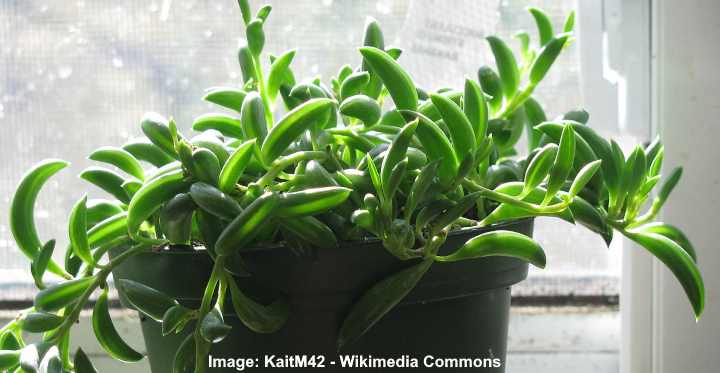
String of Bananas (Senecio radicans) is a trailing succulent plant with cascading stems, banana-shaped leaves, and small whitish flowers. String of bananas is a popular easy-to-care-for houseplant that is ideal for hanging baskets. This dangly hanging succulent is also known as the banana vine.
String of bananas plant is a popular vine-like succulent. The trailing string of bananas plant has similarities to other hanging succulent plants such as string of fishhooks, string of pearls, and creeping berry plants. The curled leaves that look like tiny bananas give Senecio radicans its common name.
This article is a complete care guide to growing a string of banana plant at home. You will also find handy growing tips to resolve issues with this hanging succulent plant.
String of Bananas (Senecio radicans) Care Overview
To care for string of bananas, grow the succulent plant in indirect sunlight, loose soil that drains well, and average room temperatures. Water the trailing succulent plant whenever the soil dries. Because Senecio radicans is a succulent, you don’t need to worry about humidity or fertilizing this hanging plant.
What is String of Bananas Plant?
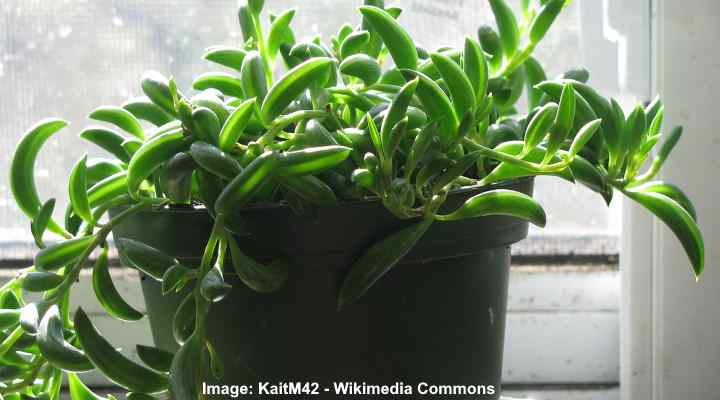
String of bananas is a trailing succulent which looks great in hanging baskets
String of bananas is a type of succulent plant in the genus Senecio and family Asteraceae. This trailing plant has the botanical names Senecio radicans and Curio radicans. The succulent species is known for its slender climbing stems that grow masses of glossy, banana-shaped leaves.
Senecio radicans is native to South Africa and grows outdoors in warm, arid climates. These “banana vine” succulents are drought-tolerant plants that thrive in USDA zones 10 and 11.
String of banana plants are ideal for growing indoors in hanging baskets, pots, and as a ground cover plant in succulent gardens. Indoor conditions are suitable for growing these interesting plants.
String of bananas has stems that grow up to 3 ft. (1 m) long. The glossy green foliage is made from curved cylindrical leaves that taper to a point. The banana-shaped leaves are 0.7” to 1” long (2 – 3 cm). The cascading stems and shiny green “bananas” make this an unusual evergreen houseplant.
String of Bananas Flowers
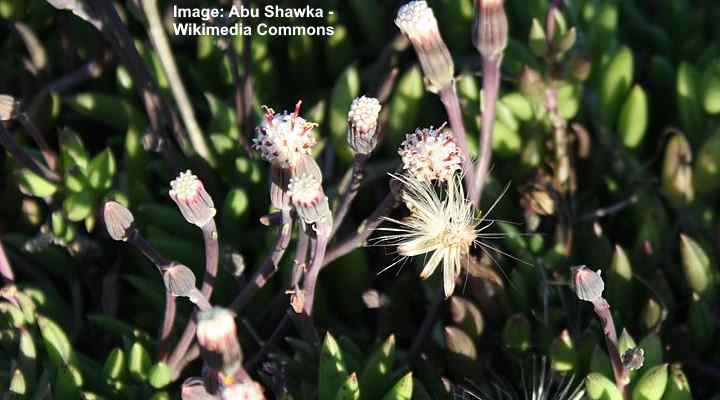
String of banana succulent rarely flowers indoors
String of banana plants blooms with tiny whitish flowers. The small flowers appear on the ends of short stems. However, conditions must be ideal for flowering. So, it’s rare for a string of bananas to bloom indoors. In any case, the flowers are small and insignificant and are no match for the succulent’s fascinating foliage.
How to Care for String of Bananas (Senecio radicans)
String of bananas is a low-maintenance hanging succulent that doesn’t require much care. It is crucial to protect the dangly plant from direct sunlight, avoid overwatering it, and not letting the plant grow in drafty conditions. If you get these three care factors right, your succulent will produce trailing stems for many years.
Let’s look in more detail at how to grow a string of bananas indoors.
String of Bananas Light Requirements
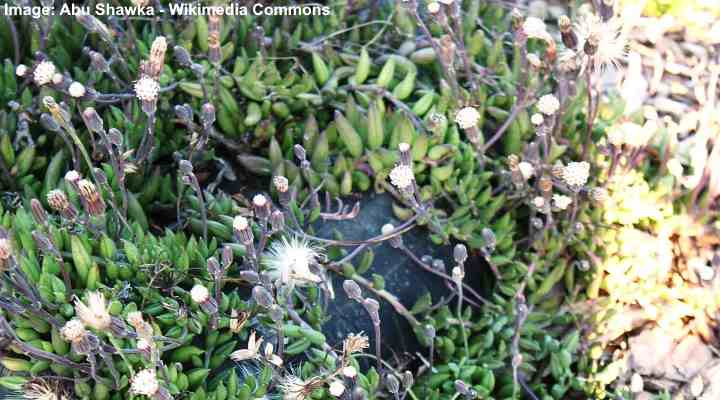
String of bananas succulent grows best in bright indirect light
Grow string of bananas succulents in bright, indirect light. For the fastest growth, this popular succulent needs medium to high light exposure. However, intense direct sunlight—such as the midday sun—can scorch the fleshy green leaves. If the hanging succulent doesn’t get enough light, it’s growth will slow, and the dangly vines will have sparse foliage.
The best place to hang a string of banana succulent is near an east- or west-facing window. This bright location provides plenty of light but avoids the intense midday sun. In a south-facing room, keep the potted string of bananas plant a few feet away from the window.
It’s best to avoid growing a string of bananas in complete shade. The dangling stems tend to get leggy as they “stretch” to look for more light. This results in long vines with meager foliage and thin banana leaves.
The Best Soil for Growing String of Bananas Indoors
Plant string of bananas in porous, well-draining soil for it to thrive in pots. Make a succulent soil mix by combining one part of regular potting soil and two parts perlite. Alternatively, you can buy a commercial potting mix for cactus plants. The most critical care factor is that soil must allow water to drain fast.
The ideal potting mix for Senecio radicans has some organic matter such as peat moss to provide nutrients and retain some moisture. Inorganic matter such as perlite amends the succulent soil to increase drainage. The combination of these soil ingredients prevents the potting medium from becoming too damp or soggy.
Ideally, the soil in the string of bananas pot should dry out every four to five days. If your soil is damp for over a week, you risk root rot, mushy “banana leaves,” and killing your succulent vine.
Top care tip for growing string of bananas: Use an unglazed clay pot to grow succulents because the soil dries faster due to the porous material.
Related reading: Eight recipes to make your own houseplant potting soil.
How to Water String of Bananas Hanging Plants
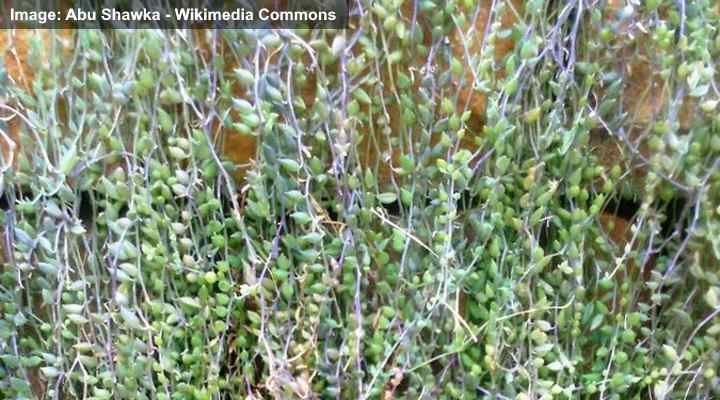
Being a succulent, water string of bananas plant when the top soil dries
Water string of banana succulents when the potting soil dries. During hot weather, you may need to water the hanging succulent every seven to ten days. In cooler weather, watering once every two weeks should be sufficient. However, soil dryness should be your guide for when to water string of bananas.
The best watering method for houseplant succulents is to drench the soil and let it dry. This soak and dry technique ensures that the roots get plenty of moisture. They then absorb this moisture in the fleshy stems and leaves. Allowing the soil to dry between waterings prevents soggy soil and root rot.
Here are a few handy tips when it comes to caring for string of banana plants:
- Avoid watering your hanging succulent vine in dribs and drabs. This prevents the roots from getting enough moisture and weakens the plant.
- Poke your finger 2” (5 cm) into the soil to check the top layer is dry before watering.
- Water the string of bananas less often in winter because growth is dormant.
Temperature Requirements for Growing String of Bananas
The ideal temperature range for growing string of bananas is 70°F to 80°F (21°C – 27°C). Therefore, average room temperatures are perfect for growing this dangling succulent. It’s best to keep the hanging plant out of cold drafts or away from hot air vents. During winter, the plant can withstand somewhat cooler indoor temperatures.
String of bananas grows outdoors in warm, dry climates. Outside, the creeping ground cover succulent grows best in temperatures between 40°F and 70°F (4.5°C – 21°C) and full sun. String of bananas isn’t frost-tolerant, so it should grow inside where temperatures dip below 30°F (-1°C).
You can hang string of bananas succulent vines outdoors in the summertime. Place the hanging basket in full to partial sun. The long trailing vines and banana-shaped leafy foliage add greenery to patios, deck areas, and balconies. It’s best to bring the plant indoors when the temperature falls to 50°F (10 °C) and below.
String of Bananas Humidity Recommendations
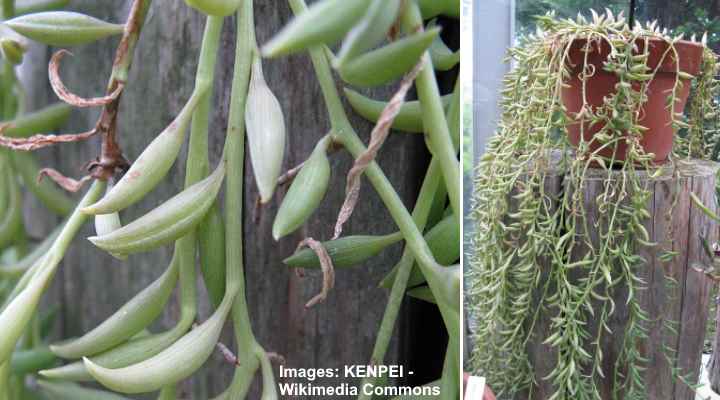
String of bananas plant is adapted to dry conditions and will grow well in average indoor humidity
Average indoor humidity is perfect for growing string of bananas trailing succulents inside. Household air tends to be drier than outside, which is well-suited to Senecio plants. If you water the succulent soil only when it’s dry and keep the plant in a bright location, humidity won’t be a problem.
Humidity over 50 or 60 percent can cause some problems if you water the plant too often. So, if you live in a humid climate, it would be best to water less frequently to avoid creating overly damp conditions. Otherwise, the small green banana leaves may start dropping off.
How to Fertilize String of Banana Plants
String of banana plants don’t have any fertilizer requirements. The trailing succulents are not heavy feeders. To keep plants thriving, plenty of light and the right watering techniques are the most critical care factors.
If you choose to use a water-soluble houseplant fertilizer to boost growth, use a diluted balanced one. Some houseplant owners apply an organic fish emulsion or liquid kelp in spring to encourage vigorous growth. However, string of bananas grows well without supplemental “feeding” as long as you get other growing conditions right.
How to Prune String of Bananas Trailing Plants
Pruning string of bananas dangly stems helps to control their length. Pruning the stringy stems can result in more growth. For example, snipping off “banana strands” halfway down their length results in multiple banana “strings” or stems growing from the vine.
The other reason for pruning string of bananas is to propagate new plants.
Propagating String of Bananas

You can easily propagate string of bananas succulent by stem cuttings
Propagating string of banana vines is best when using stem cuttings. The plant is easy to propagate by cutting a length of vine and putting it in the soil. Very soon, roots will appear from the stem and start growing in the soil.
String of bananas doesn’t propagate well from leaves. Also, there is no need to propagate cuttings in water.
Here is the best way to propagate string of bananas from stem cuttings:
- Cut a 3” to 6” (7.3 – 15 cm) length of “banana string” from a healthy plant.
- Leave the thin stems to dry for a couple of hours.
- Fill a pot with an appropriate potting mix that drains well.
- Put the ends of the cuttings directly in the soil.
- Put in a warm place, away from direct sunlight.
- Lightly mist the plant daily.
- The plant should take root in about two weeks.
- After the string of banana plant has taken root, put in a sunny location, and care for it as usual.
Repotting String of Bananas Hanging Succulents
It would be best if you repotted string of bananas every two or three years. Choose a pot or hanging basket one size larger than the current container. With trailing succulent plants in hanging baskets, it’s vital to avoid breaking the delicate stems.
To repot string of banana plants, lay the long trailing stems on a flat surface before removing the root ball from the pot. Check the banana vine’s roots for any signs of decay and snip off any mushy roots. Repot in a new pot or hanging basket with appropriate potting soil.
Pests Affecting String of Bananas Growth
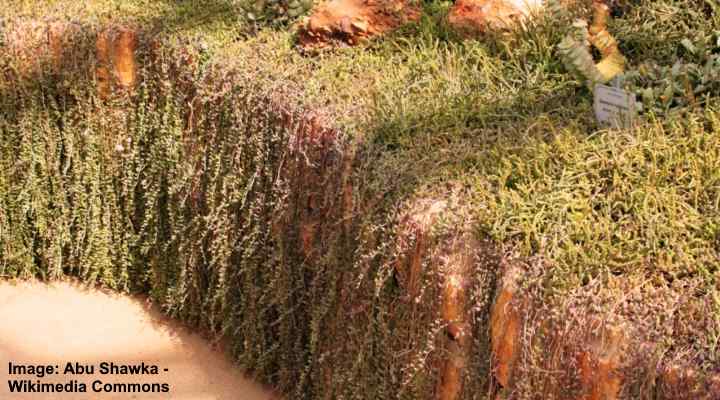
String of bananas succulent isn’t prone to common houseplant pests
Like most succulents, string of banana plants isn’t susceptible to common houseplant pests. However, in some cases, plant pests such as aphids and mealybugs can affect the plant’s growth if the plant is stressed. But it’s rare to get pest issues with species of plants in the Senecio genus.
As a precaution, it’s a good idea to check the undersides of leaves for signs of common household pests. Mealybugs look like small white fuzzy crawling creatures under leaves. Signs of aphids are tiny insects that are a green or white color.
To get rid of pests from a string of bananas succulent, use a neem oil solution. Combine 2 tsp. neem oil with 1 tsp. liquid Castile soap in a spray bottle with 1 quart (1 l) of lukewarm water. Spray the neem oil pesticide liberally on the plant’s foliage to kill plant bugs naturally.
Diseases Affecting String of Bananas
Root rot is one of the most common diseases affecting string of bananas. Root rot develops when the roots sit in waterlogged soil. The overly damp conditions cause the roots to decay and rot, and that often leads to fungal plant infections. To avoid diseased roots, always water the string of bananas when the soil is dry.
Caring for string of banana succulents means keeping it in warm conditions and avoiding overwatering. This type of care helps to prevent common houseplant diseases. Your beautiful trailing succulent will continue growing for many years without any issues.
Is String of Bananas Toxic?
There is no evidence that string of bananas is toxic to cats or dogs. However the University of California lists a related plant, string of beads (Senecio rowleyanus), as mildly toxic. Ingesting Senecio rowleyanus may cause vomiting or diarrhea, and skin contact with the plant’s sap can result in dermatitis. So be cautious when bringing Senecio radicans indoors if you have pets.
FAQ — String of Bananas Indoor Care
String of banana succulents are easy hanging plants to grow indoors. However, certain growing conditions can sometimes result in yellowing leaves, brown leaf tips, and shriveled growth. Read on to find out what can cause these issues.
Why is my string of bananas dying?
There are several reasons why string of banana plants shrivel up, turn yellow, and start to die. Common growing problems include overwatering the plant, growing in intense sunlight, or waterlogged soil. The best way to save a dying string of bananas is to snip off healthy foliage and propagate a new plant.
My string of banana plant leaves are yellow, what should I do?
Sunburn can turn the leaves on string of banana plants yellow. Direct sunlight through a window causes the glossy green foliage to lose its color. To help restore the plant’s health, move the hanging basket or pot away from the window.
Why are string of banana leaves turning brown?
If your “banana string” leaves have brown tips, it could be due to overexposure to sunlight. You will need to move the potted succulent to a shadier location, out of direct sunlight. However, it’s good to remember that too little light or constant shade results in leggy growth.
Why is my string of bananas shriveling?
Similar to most succulents, banana vines start to wither if they are underwatered. Although string of banana plants tolerate drought, they need some moisture to survive. Usually, drenching the soil for a minute or so is enough to bring a withered, thirsty succulent back to life.
Related articles:
- String of Hearts Plant (Ceropegia Woodii): Care Guide
- The Best Indoor Vine Plants and Climbers
- Learn How to Care for Succulents
